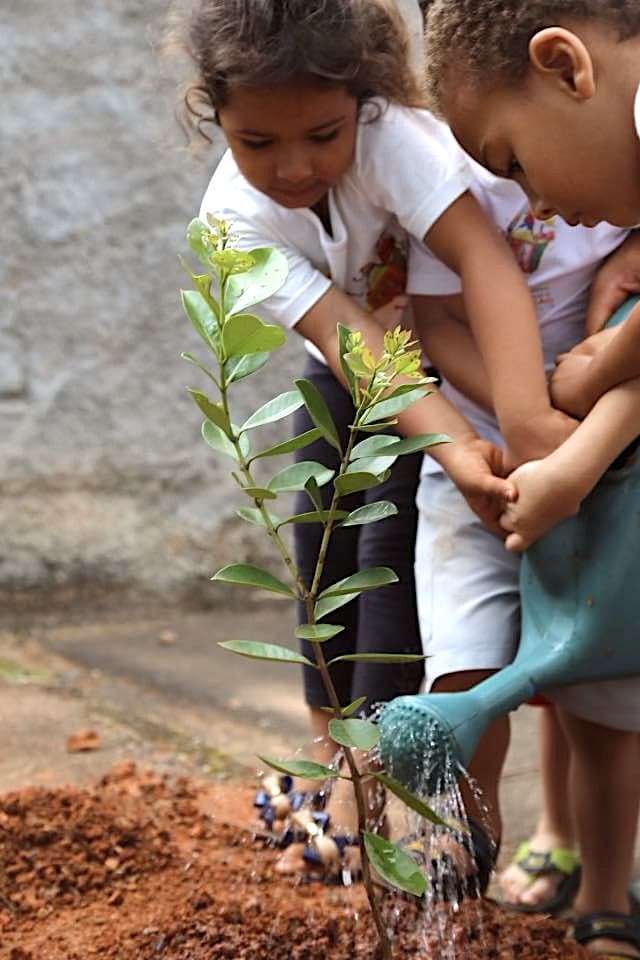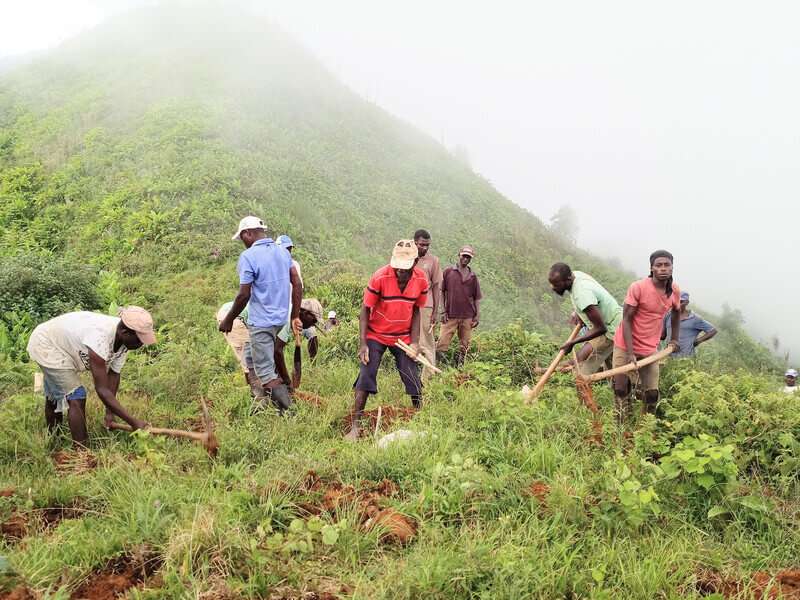Climate anxiety is on the increase, but there are things you can do to help turn that stress into action.
We live in anxiety-inducing times. Every week, day, hour, and even minute, it feels like there’s a new story about something terrifying, sad, or concerning happening in the world.
I always feel like I’m just a few clicks away from finding out something that will raise my anxiety levels again — devastating floods, wildfire, rising sea levels, drought. It’s endless. We shouldn’t look away from concerning news, though. Ignorance might be bliss in the short term, but it is dangerous in the long term, especially when it comes to the climate crisis. Urgent action is needed to limit rising temperatures. While the most important changes will come from a governmental and corporate level, individual action, in the form of activism (both online and in person), donations to climate causes, and behavioral changes (like eating more plant-based food) are important.
Staying informed keeps us motivated. I know that reading about how detrimental fast fashion is to the environment, for example, keeps me away from the incredibly enticing cheap prices at Shein. But there is a limit to what we humans can handle when it comes to scary, bad news. This is particularly evident in the rise in Google searches for “climate anxiety.” In November, data from Google Trends revealed that the number of search queries related to climate anxiety is soaring. In fact, searches in the first 10 months of 2023 were 27 times higher than they were in 2017.

And believe me, I can relate. As a journalist working in the sustainability space, it is my job to know just how bad things are and how bad they may get. I also have Generalized Anxiety Disorder (GAD) and, more recently, I was diagnosed with Obsessive Compulsive Disorder (OCD). It’s not a great cocktail for perfect mental health, but writing about the environment is my passion, and I love it. It also means that I have had to learn a thing or two about coping with anxiety in an uncertain world.
You don’t need to have a diagnosed anxiety disorder to struggle with climate anxiety. Most people would rarely be able to read about deforestation, flooding, drought, rising temperatures, and species decline without feeling anything at all. But as the saying goes, you can’t pour from an empty cup. It’s harder to make productive, healthy choices for you and the planet if you’re paralyzed with fear.
It’s important that we still take time for ourselves, prioritize our mental health, and regularly tap out of the endless negative news cycle. Here are just a few helpful things I’ve learned along the way during my own anxiety journey.

1. Stop doomscrolling
Before smartphones, news was easily accessible, but there was a natural limit on how much you could consume. You might read the newspaper on the train to work or listen to the car radio while running errands. You would finish the paper, or the news broadcast would end, and you would move on with your day. Things are very different now — the news never ends.
All you need to do is open social media or your news app, and you’re hit with new information. You don’t even need to go searching for it — often, I’ll take out my phone to find a recipe, and 20 minutes later, I’m deep in a doom scroll.
“Doomscrolling” is a modern phenomenon; it refers to the tendency to continue scrolling through negative news, even though it is making us feel stressed and anxious. Research published in the journal Health Communication in 2022 noted that more than 70 percent of study participants reported mental health issues as a result of this urge to keep up with negative news constantly.
Breaking this habit is important, and there are ways you can help yourself stop if you keep finding yourself in a scroll hole. You can impose screen time limits for yourself, for example, put your phone on do not disturb or leave it in another room in the evenings. But if you’re finding healthy habits hard to stick to, you can also enlist further help. Apps like Freedom, Moment, and AppDetox, for example, are designed to help support you by restricting your access on social media and news apps.

2. Balance negative news with positive news
Humans have a negativity bias, and that’s all to do with evolution. We tune into threats so that can keep ourselves and our loved ones safe. And this is reflected in the media — negative news always gets the most attention. But this doesn’t mean the positive news isn’t out there.
It helps to acknowledge our own negativity bias and actively seek out positive news to balance it out. (Ethos, for example, is filled with solution-oriented content, and you can also search out lists of positive environmental stories on Google.) Because while the climate crisis is scary and daunting, we do have some hope. When you’re feeling like you’re lost in a pit of climate despair, it’s good to remind yourself of that fact.

Support and engage with causes you care about
Anyone who has experienced high or disordered levels of anxiety knows that scary thoughts or triggers can spiral into hours of rumination. This means getting stuck in a cycle of repetitive negative thoughts that don’t really have an immediate solution.
One technique to stop rumination is to acknowledge the thoughts without engaging with them (easier said than done, but with practice, it does work). But we can also help our brains, and the planet at the same time, by actually taking some form of constructive action.
You could donate to an environmental nonprofit, for example, or spend 15 minutes signing petitions online to help the causes you care about. You could also attend a demonstration or volunteer some of your time to help a charity. Another option is to make a plan to make some more environmentally conscious choices at home, like eating less meat or choosing to buy second-hand clothing instead of fast fashion.
The actions you take don’t always have to be big, but by doing something, you’re helping to give yourself more of a sense of control over the problem and, in turn, helping yourself to feel more positive about the future.

Connect with nature
If in doubt, go for a walk. No, really. Getting out in nature, even if it’s just the local park, can help to lift your mood. In fact, in April 2023, one analysis suggested that nature prescription programs could help people with anxiety and depression manage their symptoms. Plus it’s good for our bodies, too.
“You go out for a walk out in a green space which helps with fitness – that also helps to improve your mental health, reduces loneliness, improves sleep, and can also help to reduce one’s blood pressure,” Professor Thomas Astell-Burt, lead researcher of the University of Wollongong in Australia, told the Guardian. “It’s good for mental health, good for physical health, [and] good for keeping active.”
Being closer to wildlife can help us, too. In 2022, research published in Scientific Reports suggested that seeing or hearing birds could help support overall well-being.
“The special thing about birdsongs is that even if people live in very urban environments and do not have a lot of contact with nature, they link the songs of birds to vital and intact natural environments,” said Emil Stobbe, an environmental neuroscience graduate student at the Max Planck Institute for Human Development told the Washington Post.

Don’t be afraid to ask for help
And finally, if you’re feeling overwhelmed with anxiety, don’t be afraid to seek support.
For some people, intense climate anxiety is actually a sign of OCD, a mental health condition defined by obsessions and compulsions. Contrary to what you may have seen in the media, OCD is not about being neat, tidy, or clean. While some people can suffer from perfectionism OCD, for many, compulsions are hidden or subtle. If you are obsessively researching on Google, for example, asking for reassurance constantly, or ruminating so much it’s taking over your day, it might be time to seek professional help.
“You could experience intrusive thoughts, images, worries, or feelings about future natural disasters, famines, mass extinctions, and other fallouts of climate change,” advises April Kilduff, a licensed therapist, for OCD treatment platform NOCD. “If those intrusive triggers are followed by compulsive behavior or mental actions, you could be experiencing obsessive-compulsive disorder (OCD) with a focus on climate themes.”
One of the main treatments for OCD is Exposure Response Therapy, and sometimes medication is recommended, too. But therapy can also help with general climate anxiety, too. So even if you don’t think your symptoms match up with OCD, but you’re struggling with low mood or constant anxiety, it’s still a good idea to seek help if you have the means. If you can’t access therapy, speaking to loved ones you trust may also be beneficial, too.
The world is a scary and uncertain place, but you don’t have to suffer through your fears in silence. For more on dealing with general anxiety, OCD, or climate anxiety, you can find support online from organizations like the National Alliance on Mental Illness and the Climate Psychology Alliance.
Related on Ethos:


